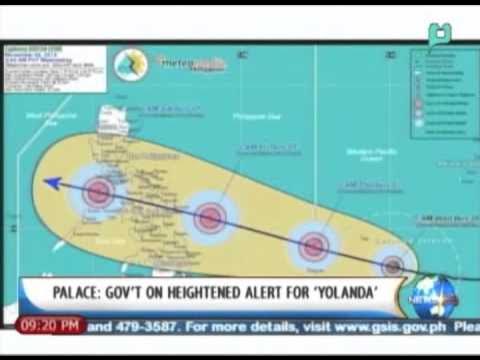CDRA 1: Collect and Organize Climate Change and Hazard Information
Summary
TLDRThis instructional video, presented by the Department of the Interior and Local Government in Central Luzon, guides the process of mainstreaming climate and disaster risk assessment into Local Government Unit (LGU) development plans. It defines key concepts such as climate change, disaster risk, vulnerability, and adaptive capacity, while detailing steps for incorporating climate data and hazard information into comprehensive development and land use plans. The video emphasizes the importance of using climate change projections, historical disaster data, and GIS tools to better prepare communities for climate impacts and natural hazards.
Takeaways
- 😀 Climate change refers to long-term shifts in temperature and weather patterns, influenced by both natural factors and human activities like emissions and land use changes.
- 😀 Disaster risk assesses the likelihood of harm or loss due to natural or human-induced hazards, with a focus on predicting how these hazards affect people, property, and the environment.
- 😀 Climate change impacts can be both harmful and beneficial; for example, some regions may experience cooling that supports agriculture or human health.
- 😀 Climate change and disaster risk are interconnected, with climate change often intensifying the frequency and severity of natural hazards such as storms, floods, and droughts.
- 😀 Vulnerability is defined by three factors: exposure (who and what is at risk), sensitivity (how much the affected systems will be impacted), and adaptive capacity (the ability to adjust and cope with changes).
- 😀 Climate change is future-focused, predicting long-term changes, while disaster risk focuses on present and immediate threats from natural hazards.
- 😀 The six major steps in mainstreaming SIDRA (climate and disaster risk assessment) into local planning are: 1) Collect and organize climate and hazard information, 2) Scope potential impacts, 3) Develop an exposure database, 4) Conduct vulnerability assessment, 5) Conduct disaster risk assessment, 6) Summarize findings.
- 😀 Climate change information can be gathered through reports like PAGASA’s climate projections, which provide insights on future temperature and rainfall changes under different emission scenarios.
- 😀 Hazard maps and data from agencies like the Mines and Geosciences Bureau and PAGASA are essential for identifying the specific hazards that affect a locality and preparing for future risks.
- 😀 The inventory of past disaster data helps local governments understand the historical impact of various hazards, aiding in the planning and mitigation of future risks.
Q & A
What is the primary focus of the video?
-The video focuses on how to mainstream climate change and disaster risk assessments into the formulation and updating of local government unit (LGU) comprehensive development plans (CDPs) and comprehensive land use plans (CLUPs).
How is climate change defined in the video?
-Climate change is defined as a change in climate over a long period, typically measured over 30 years. It can include variations in temperature and weather patterns, often influenced by both natural factors and human activities such as emissions and land use changes.
What is the difference between climate change and weather?
-Climate change refers to long-term trends in temperature and weather patterns, while weather refers to daily atmospheric conditions at a specific location and time.
What are the natural and human-induced factors contributing to climate change?
-Climate change is largely driven by natural factors like changes in the sun's energy and ocean circulation. However, human activities such as greenhouse gas emissions, deforestation, and urban development significantly intensify the process.
What does 'disaster risk' refer to?
-Disaster risk refers to the likelihood of harmful consequences or losses to people, property, livelihood, economic activity, and the environment resulting from natural or human-induced hazards.
What is the relationship between climate change and disaster risk?
-Climate change can trigger and aggravate disaster risks by altering the frequency, intensity, and predictability of natural hazards like floods, storms, and heatwaves, making communities more vulnerable.
What are the key components used to measure vulnerability in the context of climate and disaster risk?
-Vulnerability is measured through exposure (people, systems, and properties at risk), sensitivity (how a system responds to changes in climate), and adaptive capacity (the ability to adjust and cope with potential harms).
What are the six major steps in the SIDRA process for mainstreaming climate and disaster risk in development plans?
-The six major steps in the SIDRA process are: 1) Collect and organize climate change and hazard information, 2) Scope the potential impacts of hazards and climate change, 3) Develop an exposure database, 4) Conduct climate change vulnerability assessments, 5) Conduct disaster risk assessments, and 6) Summarize findings.
What is the role of hazard maps in the SIDRA process?
-Hazard maps are crucial in identifying areas affected by natural hazards, such as floods or landslides, and in characterizing these hazards. However, they have limitations, including a lack of information on the magnitude, frequency, duration, and speed of onset of these hazards.
What are the primary sources for collecting climate change data in the Philippines?
-Key sources for climate change data include PAGASA (Philippine Atmospheric, Geophysical and Astronomical Services Administration), particularly reports like 'Climate Change in the Philippines' and the 'Observed Climate Trends and Projected Climate Change in the Philippines.'
Outlines

此内容仅限付费用户访问。 请升级后访问。
立即升级Mindmap

此内容仅限付费用户访问。 请升级后访问。
立即升级Keywords

此内容仅限付费用户访问。 请升级后访问。
立即升级Highlights

此内容仅限付费用户访问。 请升级后访问。
立即升级Transcripts

此内容仅限付费用户访问。 请升级后访问。
立即升级浏览更多相关视频

CDRA 4: Conduct Climate Change Vulnerability Assessment

CDRA 3: Develop Exposure Data Base

CDRA 5: Conduct Disaster Risk Assessment

CDRA 2: Scoping the Potential Impacts of Disasters and Climate Change

Pagtatag ng Dept. of Disaster Resilience, tinalakay sa Senado

[NewsLife] Palace: Gov't on heightened alert for Yolanda || November 6, 2013
5.0 / 5 (0 votes)
